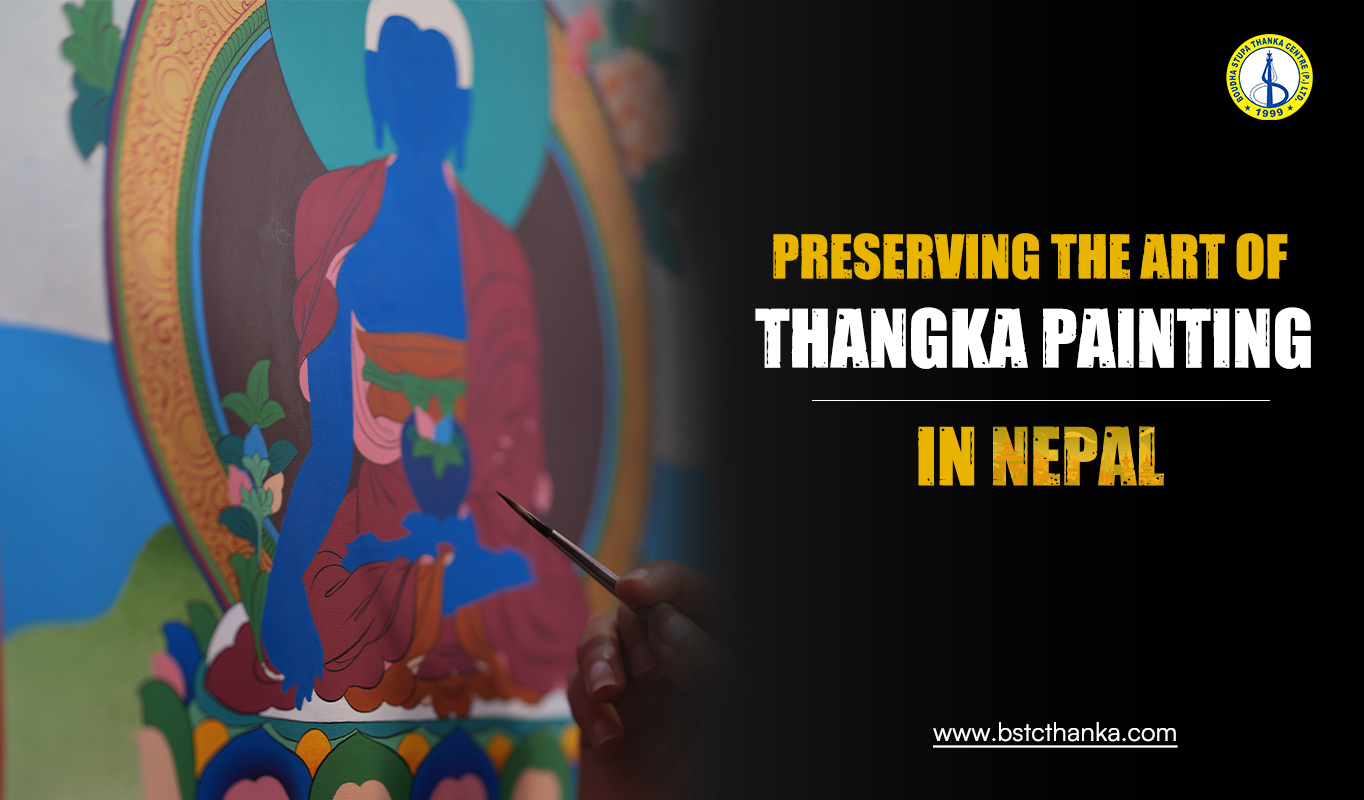
Preserving the Art of Thangka Painting in Nepal
Thangka painting is an integral part of Nepal’s cultural and spiritual heritage. This sacred art form, deeply rooted in Tibetan Buddhism, is more than just a visual representation; it is a meditative practice, a religious tool, and a historical record of Buddhist teachings. However, the tradition of Thangka painting is at risk due to various socio-economic and technological changes. Preserving Thangka art requires conscious efforts from artists, cultural institutions, and collectors to ensure that this centuries-old practice continues to thrive.
Challenges Faced by Thangka Artists
The art of Thangka painting demands years of rigorous training under a master, precise adherence to iconographic rules, and immense patience. Despite their dedication, artisans face several challenges that threaten the survival of this tradition.
Economic Hardships
Traditional Thangka painting is a time-consuming process that can take weeks or even months to complete. However, the increasing demand for cheaper, mass-produced alternatives has led to declining income for artisans. Many artists struggle to earn a sustainable livelihood, pushing younger generations to seek alternative careers, often leaving the tradition behind.
Declining Interest Among Youth
With modern education and career options, fewer young Nepalese are inclined to undertake the rigorous apprenticeship required to master Thangka painting. The intricate details and spiritual discipline involved make it a demanding career choice, and without financial incentives, many prefer other fields with more immediate rewards.
Influence of Mass Production
The rise of machine-made Thangkas, often printed on synthetic fabrics, has further reduced the market for authentic handmade paintings. Tourists and collectors unaware of the difference between authentic and mass-produced Thangkas may unknowingly contribute to the decline of traditional painting practices.
Preservation of Traditional Techniques
Authentic Thangka paintings use natural mineral pigments, 24 carat gold leaf, and hand-woven cotton canvases. However, due to the scarcity of high-quality natural materials and increased production costs, some artisans are forced to compromise on traditional techniques. This shift affects the authenticity and durability of the artwork.
Efforts to Preserve the Craft
Despite these challenges, several initiatives are being taken to ensure the continuity of Tibetan art in Nepal, particularly Thangka painting. These efforts come from both governmental and non-governmental organizations, as well as from individual artisans dedicated to passing down their knowledge.
Government and Institutional Support
Cultural institutions and organizations like the Nepal Academy of Fine Arts actively promote Thangka art through exhibitions, workshops, and educational programs. The Nepalese government has also recognized the importance of traditional painting preservation, though more substantial financial support is needed to sustain artisans.
Master-Apprentice Training System
The traditional guru-disciple method of teaching remains crucial for the preservation of authentic Thangka techniques. Many master painters continue to take in students, ensuring the transfer of sacred knowledge and skills. Institutions like the Shechen Institute of Traditional Buddhist Art offer structured programs to train young artists in Thangka painting.
Revival of Natural Materials
Some artists and organizations are reviving the use of natural mineral pigments, traditional brushes, and handmade canvases to maintain the authenticity of Thangka paintings. These efforts not only uphold tradition but also improve the longevity and aesthetic value of the artwork.
Online Platforms and Global Outreach
With the rise of e-commerce and social media, Thangka artists now have new opportunities to reach global audiences. Online marketplaces allow artisans to sell their work directly to collectors, bypassing intermediaries and ensuring fair compensation for their labor. Digital storytelling through videos and social media posts also raises awareness about the significance of preserving Thangka art.
Stories of Nepalese Artisans
Tahal Lama: A Guardian of Tradition
Tahal Lama, a Thangka master from Bhaktapur, has been painting for over three decades. Despite economic challenges, he remains dedicated to using natural pigments and traditional methods. Through his small studio, he trains young apprentices, ensuring that the next generation continues the legacy.
Sanjita Lama : Breaking Barriers
One of the few female Thangka painters in Nepal, Sanjita Lama has defied gender norms to establish herself in the field. She actively teaches women the art of Thangka painting, expanding opportunities for female artisans and fostering a more inclusive artistic community.
Boudha Stupa Thanka Centre Initiative
Organizations like BSTC work directly with artisans, providing them with fair trade opportunities and promoting authentic Thangka paintings worldwide. This initiative ensures that artists receive due recognition and financial stability, encouraging them to continue practicing their craft.
How Buyers Can Support Preservation
Collectors and enthusiasts play a vital role in preserving Thangka art by making conscious purchasing decisions and supporting ethical practices. Here’s how buyers can contribute:
Purchase Authentic Handmade Thangkas
By choosing authentic Thangka paintings over mass-produced versions, buyers help sustain artisans and encourage traditional practices. Checking for hand-painted details, natural pigments, and certificates of authenticity can ensure a genuine purchase.
Support Fair Trade Artisans
Buying from organizations and stores that follow fair trade principles ensures that artists receive fair compensation. Stores like Boudha Stupa Thanka Centre work directly with artisans, maintaining ethical trade practices.
Educate Yourself and Others
Understanding the history, symbolism, and techniques behind Thangka paintings enhances appreciation for the art form. Sharing this knowledge through social media, blogs, and word of mouth helps raise awareness about the importance of traditional painting preservation.
Commission Custom Artwork
Commissioning a personalized Thangka not only provides a unique spiritual piece but also directly supports artisans. Custom orders allow artists to continue practicing their skills and sustain their livelihood.
Visit Workshops and Studios
Travelers visiting Nepal can support local artists by visiting workshops and studios, learning about the painting process, and purchasing directly from artisans. This firsthand experience fosters deeper appreciation and sustains the local Thangka community.
Conclusion
Preserving Thangka art is essential for maintaining Nepal’s rich cultural heritage. Despite modern challenges, the dedication of master artists, support from institutions, and conscious efforts from buyers ensure that this sacred tradition continues to flourish. By understanding the struggles of artisans, appreciating their craftsmanship, and supporting ethical practices, we can all contribute to safeguarding the legacy of Tibetan art in Nepal. The path to traditional painting preservation lies in collective responsibility, ensuring that future generations can continue to marvel at and learn from the spiritual and artistic depth of Thangka paintings.



